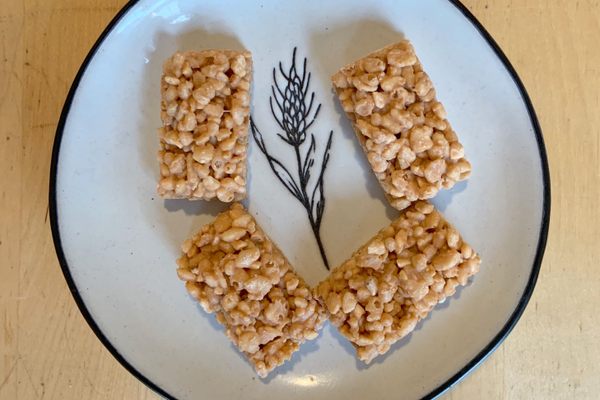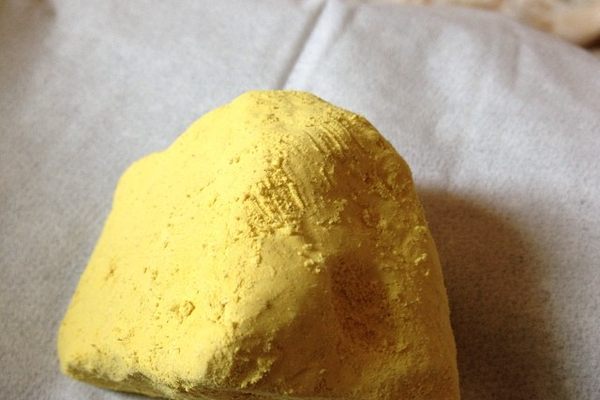In 19th-century Salem, Massachusetts, no afternoon tea was complete without Gibraltar rocks. Also known as Salem Gibralters, or simply Gibralters, the tooth-threatening candy gets its name from the massive limestone promontory the Rock of Gibraltar. Even with a hammer, the candy is hard to break apart, as you must invariably do after receiving a bar. At that point, though, the lemon or peppermint candy melts in your mouth.
The manufacturing process has not changed much in several centuries. After boiling a syrup of sugar, water, cream of tartar, and cornstarch in a giant kettle, candymakers stretch the hot dough, weaving it around a metal hook until it becomes a supple rope that can be flattened, aerated like taffy by stretching it out, and cut into small pieces for packaging. Wrapped in wax paper and a paper sleeve, the milky white candy can be broken into bits and shared, or, given the candy’s long shelf life, hoarded in a candy cache. Sailors historically found this characteristic particularly helpful, and the candy is also mentioned in historic documents and the 19th-century novel The House of the Seven Gables.
Accounts from the early 19th century tell of Mrs. Spencer, the candy-maker who first brought Gibralters to the streets of early Salem, which she delivered to shops by way of horse-drawn wagon. The treat addicted children and adults alike, although youngsters tended to prefer the lemon kind, while their seniors opted for peppermint. Today the candy—and another old-time favorite, molasses-flavored Black Jacks—are both sold out of Salem by Ye Olde Pepper Company, carrying American candy continuity into the 21st century.
Where to Try It
-
Ye Olde Pepper Candy Company Website
122 Derby St, Salem, Massachusetts, 01970, United StatesPackages of gibralters can be bought for a few dollars alongside fudge, taffy, and other classic sweets.
-
Ye Olde Candy Company, North Andover Store
59 Main Street , North Andover, Massachusetts, 01845, United StatesA second location of the historic candy company.
Written By
 e1savage
e1savage
Sources
- www.oldepeppercandy.com/
- en.wikipedia.org/wiki/Gibraltar_rock_(candy)
- shewhoseeks.blogspot.com/2009/11/gibralter-rock-candy.html
- www.pdfbooksworld.com/pdf/Child-Life-in-Colonial-Days.pdf
- books.google.com/books/about/Sweets.html?id=ETluYRHyjKwC
- books.google.com/books/about/Memories_of_Old_Salem.html?id=NuplvgAACAAJ
- www.youtube.com/watch?v=u9OqLiT7Hvs













